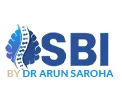Introduction: The Rocky Road to Recovery
A slip disk, often characterized by debilitating pain and limited mobility, can dramatically disrupt daily life. However, with the right approach and treatments, recovery is not only possible but also achievable in a manner that restores function and minimizes discomfort. This guide seeks to illuminate the path forward for those grappling with a slip disk, offering holistic insights for effective recovery.
Understanding the Injury: A Quick Recap
Before diving into the recovery process, it's essential to understand the nature of a slip disk.
Anatomy Reminder
The spine comprises intervertebral discs that cushion the vertebrae. A slip disk occurs when the disc's inner, gel-like substance protrudes due to a tear in its outer ring, pressing on nearby nerves.
Immediate Actions Post-Injury
The moments following the initial onset of slip disk symptoms are crucial for preventing further complications.
Rest and Immobilization
Ceasing aggravating activities and allowing the back to rest can prevent further damage.
Over-the-counter Medications
Non-prescription pain relievers can alleviate initial pain, but it's essential to consult with a physician about appropriate dosages.
Cold and Heat Therapy
Applying cold packs initially can reduce inflammation, followed by heat therapy to relax and soothe tissues and muscles.
Medical Interventions for Recovery
Professional medical treatment forms the cornerstone of slip disk recovery.
Physiotherapy
Tailored exercises and stretches under the guidance of a physiotherapist can restore mobility and strengthen the back.
Medications
Apart from pain relievers, doctors might prescribe muscle relaxants, nerve pain medications, or even cortisone injections.
Surgery
In severe cases where conservative treatments don't work, surgery might be recommended to remove or repair the protruding disc.
Alternative Therapies for Pain Management
Some individuals find relief through alternative treatments.
Chiropractic Care
Spinal adjustments by trained chiropractors can sometimes alleviate the pain and improve spinal function.
Acupuncture
This traditional Chinese medicine technique involves inserting thin needles at specific points, which can provide pain relief for some.
Massage Therapy
Targeted massages can relax tense muscles, improving blood flow and aiding in the healing process.
Long-term Recovery Strategies
Sustained recovery from a slip disk involves a blend of lifestyle changes and preventative measures.
Regular Exercise
A routine that includes core-strengthening and flexibility exercises can protect against future injuries.
Ergonomic Considerations
Ensure workstations, chairs, and sleeping positions support the spine's natural curve.
Maintain a Healthy Weight
Excess weight can strain the spine, so a balanced diet and regular exercise are crucial.
Conclusion: The Path to a Pain-Free Life
Under the care of Dr. Arun Saroha, recognized as the best neurosurgeon in India, overcoming a slip disk becomes a manageable journey. Combining medical expertise with lifestyle adjustments and alternative therapies, patients under his guidance can effectively navigate the challenges of slip disk recovery, emerging stronger and more resilient for daily life demands.



